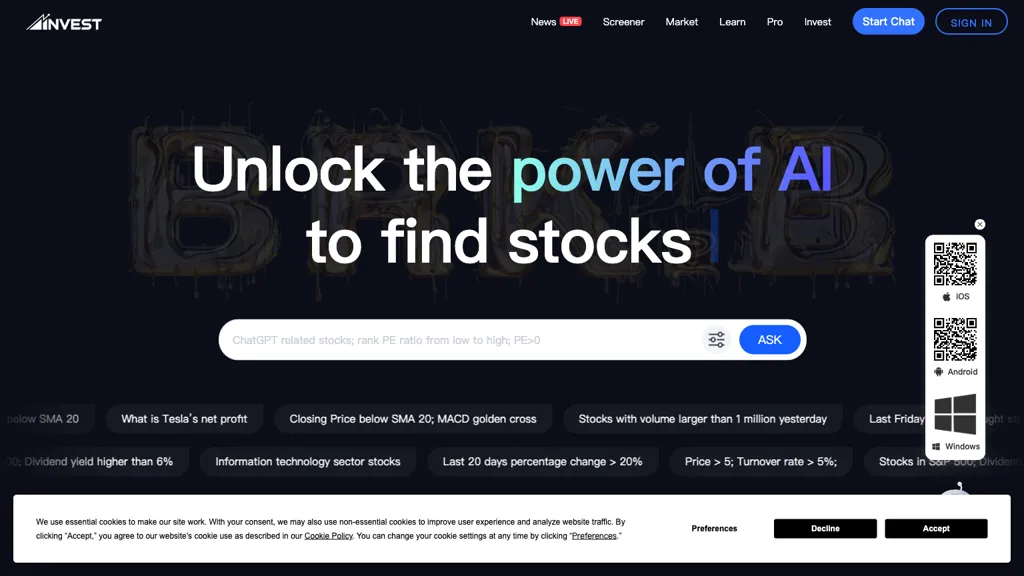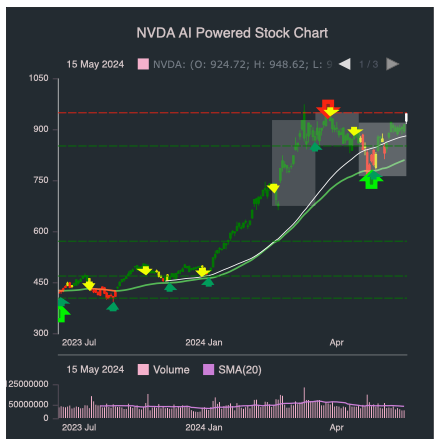Top 10 Tips To Assess The Accuracy Of The Data And Origin Of Ai Analysis And Stock Prediction Platforms
Analyzing the quality of the sources and data used by AI-driven stock prediction as well as trading platforms is crucial to ensure accurate and reliable information. A poor quality of data could cause inaccurate predictions, financial losses and mistrust on the platform. Here are the 10 best methods to evaluate sources and the quality of the data:
1. Verify data sources
Find out the source of the data: Make sure the platform uses reputable and well-known data suppliers (e.g., Bloomberg, Reuters, Morningstar, or exchanges like NYSE, NASDAQ).
Transparency. Platforms should disclose their data sources and be updated regularly.
Do not rely on one platform: trustworthy platforms often combine data from several sources to lessen bias.
2. Check the Freshness of Data
Data that is delayed or real-time? Determine whether the platform provides actual-time or delayed data. Real-time information is essential to ensure that trading is active. The delayed data is sufficient for long term analysis.
Update frequency: Make sure to check the frequency with the time that data is being updated.
Historical data accuracy: Ensure the accuracy of your historical data. free of anomalies or gaps.
3. Evaluate Data Completeness
Check for missing information.
Coverage. Make sure your platform is able to offer a range of stocks, markets and indices that are pertinent to your trading strategy.
Corporate actions: Verify if the platform accounts for dividends, stock splits, mergers and other corporate actions.
4. Accuracy of Test Data
Cross-verify data: Check the data of the platform with other reliable sources to guarantee consistency.
Error detection: Look for outliers, price points or financial metrics.
Backtesting. You can backtest strategies with historical data and compare the results to what you expected.
5. Measure Data Granularity
Level of detail: Ensure the platform provides granular data like intraday prices, volume, bid-ask spreads, and order book depth.
Financial metrics: See if the platform provides detailed financial statements (income statement and balance sheet, as well as cash flow) and important ratios (P/E, P/B, ROE, etc. ).
6. Clean up and processing of data
Normalization of data: To ensure uniformity, make sure that the platform normalizes all data (e.g. by adjusting for dividends and splits).
Outlier handling: Check the way in which the platform handles outliers or anomalies within the data.
Missing data imputation: Check whether the platform has effective methods to fill in the missing data points.
7. Evaluate the consistency of data
Data alignment to the correct time zone. To prevent discrepancies ensure that all data is synced with each other.
Format consistency – See if data are presented in the same format (e.g. units or currency).
Cross-market compatibility: Make sure that the data from different markets and exchanges are in sync.
8. Assess Data Relevance
Relevance to the trading strategy Ensure the data aligns with your style of trading (e.g., technical analysis, fundamental analysis, quantitative modeling).
Selecting Features: Check whether the platform offers useful features, such as economic indicators, sentiment analysis as well as news data that will enhance forecasts.
Examine Data Security Integrity
Data encryption: Make sure your platform has encryption in place to protect data storage and transmission.
Tamperproofing: Ensure that data hasn’t been altered or manipulated.
Compliance: Check to see whether the platform complies with the regulations on data protection.
10. The Transparency Model of AI Platform is Tested
Explainability: Make sure the platform provides you with insights on the AI model’s use of data to make predictions.
Bias detection – Examine to determine if your system actively monitors data and models for biases.
Performance metrics. Analyze the performance metrics, such as accuracy, precision, and recall to assess the validity of the platform.
Bonus Tips
User reviews: Read user reviews of other users to get a feel for the reliability and quality of the data.
Trial period: Try an unpaid trial or demo to check the platform’s data quality and features prior to committing.
Support for customers – Ensure that the platform you choose to use is able to offer a robust customer support in order to resolve any data-related issues.
Utilize these suggestions to determine the source of information and quality for AI stock prediction platforms. Make educated decisions regarding trading by using this information. Have a look at the best helpful site on ai trade for site examples including ai for investment, market ai, AI stock trading bot free, AI stock market, using ai to trade stocks, options ai, best ai for trading, ai chart analysis, ai investment app, ai investing and more.

Top 10 Tips To Evaluate The Educational Resources Of AI stock-Predicting/Analyzing Trading Platforms
To better understand how to utilize, interpret and make informed trade decisions consumers must review the educational materials provided by AI-driven prediction as well as trading platforms. Here are 10 top-notch tips for evaluating these resources.
1. Comprehensive Tutorials & Guides
Tips – See whether the platform has instructions and step-by-step tutorials for beginners as well as advanced users.
Why: Clear instructions will help users navigate the platform and better understand it.
2. Video Demos and Webinars
Find video demonstrations as well as webinars, live training sessions.
Why? Interactive and visual content aids in understanding difficult concepts.
3. Glossary
Tip: Make sure the platform offers a glossary of AI and financial terms.
Why: This helps everyone, but in particular beginners to the platform, be able to comprehend the terminology.
4. Case Studies and Real-World Examples
TIP: Make sure there are case studies and examples of the AI models used in real-world situations.
What’s the reason? Practical examples show the platform’s effectiveness and help users to understand its applications.
5. Interactive Learning Tools
Tips: Look for interactive tools such as simulators, quizzes, or sandbox environments.
The reason: Interactive tools allow users to practice and test knowledge without risking real money.
6. Updated content
Verify that the educational resources are regularly updated to reflect changes in market trends or regulations or new features, and/or changes.
What’s the reason? Outdated information can result in confusion or incorrect usage of the platform.
7. Community Forums Support
Find active support forums and forums where you can answer questions or share your insights.
Why? Peer-to peer support and experienced guidance can help improve problem solving and learning.
8. Certification or Accreditation Programs
Make sure the platform is equipped with accreditation programs and certification courses.
Why? Formal recognition of students’ achievements can motivate them to learn more.
9. Accessibility, User-Friendliness, Usability and Usability
Tip: Assess how easily accessible and user-friendly the educational materials are (e.g. mobile-friendly, downloadable PDFs).
Why: Easy accessibility allows users to learn at their own speed.
10. Feedback Mechanism for Educational Content
Find out if students can provide feedback about the instructional material.
Why: User feedback helps improve the quality and relevance of the content.
Tips for learning: Make use of different formats for learning
Make sure the platform you choose to use is flexible enough to allow for different learning styles (e.g. video, audio as well as text).
If you carefully examine these factors and carefully, you will be able to determine whether the AI stock trading platform and prediction software provides you with a comprehensive educational material that will enable you to maximize their potential and make informed choices. Read the best official source about invest ai for website advice including best ai penny stocks, how to use ai for copyright trading, ai copyright signals, trading ai tool, how to use ai for stock trading, free AI stock picker, how to use ai for stock trading, AI stock analysis, ai investment tools, ai options trading and more.
